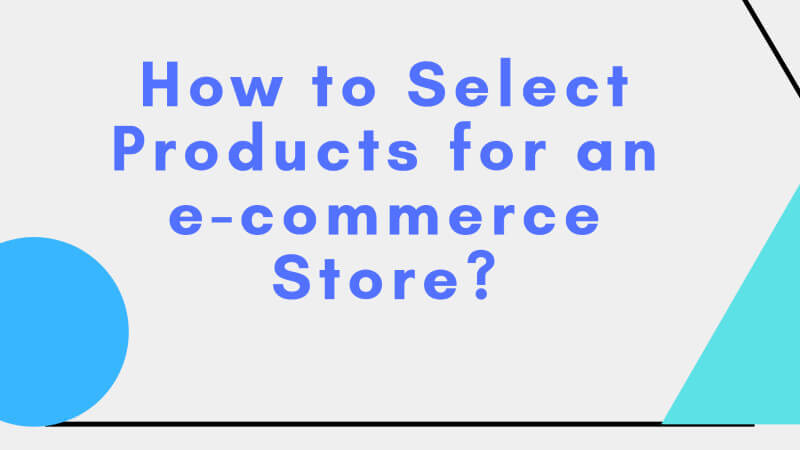How to Select Products For An E-Commerce Store
This is a guest post by Sharline Shaw, the founder of a leelineSourcing.com, who are experts in supplier sourcing. Have an idea for a product to sell? Leeline Sourcing can connect you with the top suppliers with the best pricing. Also providing personalized and tailored services, such as OEM, ODM, packaging design, logo printing, and more.
Starting a global business has never been easier. The internet makes it possible to sell goods to customers across the world. Starting a business is exciting, but there are many decisions to make. As a beginner, there’s a lot to learn.
If you want to open an online store, you have to:
- choose a product to sell,
- source the item,
- manage the product shipping,
- manage inventory,
- fulfill orders, etc.
The first issue is choosing what to sell. To start a successful e-commerce business, choosing the right niche plays a crucial role in the process. You have to make sure there is a market for your products and that they will generate a profit. The product you choose will affect your other business decisions, including packing, shipping, product prices, and cost, etc.
Choosing the right product is crucial to your business.
How do you choose the right item?
Today, we will help you with this question and give you tips needed to get you on the right track.

How to Select Products for your e-commerce Store?
1. Set up your metrics
First, you have to set goals.
- Ensure that your goals are measurable so that you can track against them.
- What do you want to achieve? Be clear and specific.
- Create a timeline for your goals.
What do you want to achieve in the initial period, the first month, the second month, and the end of the business?
For instance, if you want to create a business that will bring you $500,000 in profits per month, set a schedule. Divide your goals into several different stages- the initial period, the growth period, and the expansion period. Set specific metrics for each period, including the market share, business conversions, profits, business mode, and business scale, etc.
2. Figure out what is your niche
You need an idea for a profitable niche. To generate ideas for your business, try brainstorming. Think about what’s relevant to you. Lock yourself in a room, grab paper and pen, and write down all the ideas in your mind. To feed your brainstorming session;
- Think about a business that appeals to enthusiastic hobbyists. If consumers are passionate about a particular thing, they will invest time and money in it. Choosing an appealing hobby for your niche can garner high-level engagement and loyalty from your customer.
- Find a business idea to address a customer pain point. Figure out a solution to address a problem and develop a product people need. Look for a frustrating experience that people find hard to cope with. Is there a product that could offer a solution? Could the product be better in some way?
- Start a business related to your passion. What are you interested in? You’re more likely to stay motivated through the hard work of starting a business if you’re passionate about the niche. For instance, you are passionate about fashion. How about starting a fashion store online?
- Get involved in a business in which you have professional experience. If you have worked in a specific industry, you know the ins and outs and have professional skill related to the industry. Think about turning your expertise into an online business. Utilize your experience and expertise to enter the market uniquely.
- Browse other shops. Look at their offerings, best-selling products, and selling data, etc. Analyze their sales, and use the info to benefit your business.
- Search the internet and find the best-sellers on the e-commerce websites.
- Talk to people. Include all ages and backgrounds, and ask them about their thoughts on trends and their opinion on the product idea. They will give you some ideas about your business from their perspective.
- Read reviews. Customer reviews of existing products will give you a wealth of insight. Look at what people are saying about brands and products and find out what the customer expects from the existing products.

3. Know your competitors
To sell online, you need to know your marketplace. Unless your product is unique and you are the only seller, you need to know your competition and gain a better understanding of the marketplace.
Do some market research, identify your competitors, and make a list. Categorize these competitors based on the business scale, product quality, and service quality, etc. Find a gap or opportunities that the major competitors have missed.
Look at their business website and sign up for their emails. Act as a customer might, and you can figure out how they market the product, how they price the item, and what they do to promote the products.
Find out the common features of your competitors so you can define your uniqueness and stand out.
4. Start market research on the product
Your next task is to figure out if the product can be sourced, shipped, and if it’s profitable.
Can the product be sourced easily and where from? You need to take the product supply chain and marketplace into consideration. What’s the impact on profit if you source the item instead of manufacturing it by yourself? You need to know how much you can earn for each item you sell.
Is it possible to ship the product? Customers expect cheap and fast shipping. You need to consider the overall size, weight, and dimensions of your product when you are evaluating it.
5. Think about ways to get the product
Generally, there will be three different ways to gain the item you sell:
- Manufacture the product by yourself. If you have expertise in certain products, you may create the product by yourself. You would be responsible for product design, producing, selling, and storage. You also have to purchase raw materials.
- Outsource the product. You can also outsource the item and then start to sell the item on your e-commerce store. For this method, you have to find the right supplier to manufacture the item and have the item shipped to your warehouse.
- Start dropshipping. Dropshipping is the easiest way to begin your business journey. You only need to source the item from the right dropshipping supplier and market the item on your website. You will be free from product manufacturing, order fulfillment, and product inventory management.
Choose the method to fit your business based on your business goal, budget, and human resources. Try to make sure all the products are the ones you want.

6. Take the pricing into account
Once you have your products and are preparing for launch, you need to decide how to price your items. Price is one of the key factors in driving sales and determining the customers’ decision to buy. Price well and you will be rewarded with sales and huge profit margins to help you stand out in the marketplace.
When determining your price, there are several factors you have to take into account. Your costs will include;
- the product cost,
- shipping fees,
- sourcing fees,
- and others.
What you offer is not just about cost and price.
- Think about your revenue goals and figure out what you have to earn on each product to meet the goals.
- Look at your competitors’ pricing and the market competition too. Search the product price on major e-commerce websites such as eBay and Amazon and your competitors’ website. Try to price your item competitively for a better position make any necessary adjustments on the market.
- Try to avoid overpricing and under pricing as they can harm your business.
- Consider the value your business offers to your customer base. Not all businesses offer the same level expertise and service, and not all customers have the same motivation.

7. Narrow down your choices
If you have several business ideas, you need to narrow down your choices to get started.
It’s not easy but select the best to fit your goals, resources, expertise, and profit.
There are many other decisions to make on your e-commerce journey. Follow the tips in this blog to select your products and make a start with your e-commerce store.
Once you’ve sourced your appropriate supplier with the help of Leeline Sourcing and have your online store setup, consider using a multi-channel listing software like Kyozou to manage your inventory, listings, orders and shipping all in a single, easy to use system.
BIO Info:
Sharline Shaw, the founder of a leelineSourcing.com, is an expert on Chinese export trade. With 10 years of experience in the field of sourcing in China, she is familiar with all relevant regulations and laws about China’s exporting. She’d love to share her experience with people and has written many helpful articles.




